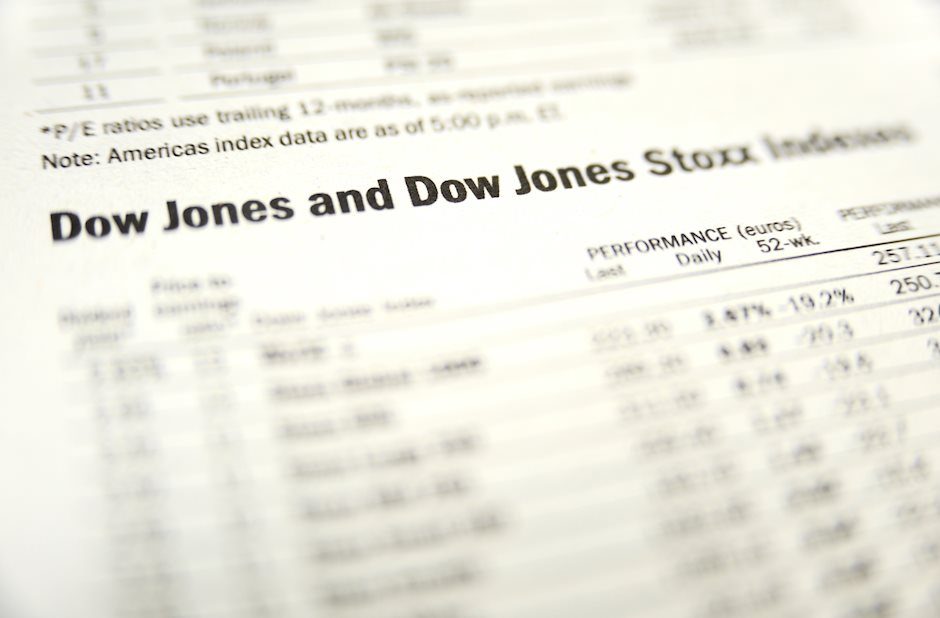Dow Jones Industrial Average Forecast: DJIA is only major index to gain on Wednesday
- Dow Jones Industrial Index continues month-long rally into fifth week.
- US annualized Q3 GDP revised much higher on Wednesday to 5.2%.
- US Treasury yields continue to decline, aiding equity market.
- Charlie Munger, Warren Buffet’s long-time partner at Berkshire Hathaway, dies at 99.
- Thursday’s release of October PCE inflation print becomes primary obstacle for DJIA.

The Dow Jones Industrial Average (DJIA) closed up just 0.04% on Wednesday, the last day of November, after losing most of its 0.4% gain in the final two hours of trading. It is so far its fifth straight week of gains. Both the S&P 500 and NASDAQ Composite indices closed moderately lower on the day. The DJIA outperforming these other two major indices has become a trend since Thanksgiving break.
US third-quarter GDP was revised upward, stoking stock market excitement. Additionally, US Treasury yields, which typically move in the opposite direction of equity market indices, continue to fall. Yields on the 2-year through 30-year tenures all moved more than 1% lower at the opening bell.
Many institutions and investors have released remembrances and condolences for Charlie Munger, who passed away on Tuesday. Munger held a partnership with Warren Buffet for 60 years, helping the Oracle of Omaha build Berkshire Hathaway into one of the largest companies by market cap in the world. Munger passed at 99 years of age, just one month before his 100th birthday.
Besides the bullish Q3 GDP figures, revisions to the US PCE Price Index showed inflation was lower than the preliminary estimate in the third quarter. Also, Dow Jones components Apple (AAPL) and Goldman Sachs (GS) have ended their partnership over the former’s credit card.
Dow Jones News: US Q3 GDP revised up as optimism grows for Thursday’s PCE print
The US Bureau of Economic Analysis released its second estimate for US GDP in the third quarter one hour before the market open on Wednesday. The first, or “advance”, estimate last month was 4.9% on an annualized basis. Wednesday’s estimate was 5.2%, demonstrating that the US economy is continuing to surprise the market with its robust growth in the face of higher interest rates.
Additionally, the market has grown more optimistic about Thursday’s Personal Consumption Expenditures (PCE) release for October – the Federal Reserve’s (Fed) preferred gauge of inflation in the US economy. This is because on Wednesday Core PCE inflation estimate for Q3 arrived at 2.3%, lower than the earlier estimate of 2.4%.
Predictions for the Fed to begin trimming rates in March 2024 have already doubled on Wednesday to 35%. A rate cut at the May meeting is now a foregone conclusion for most market participants, and US Treasury yields are dropping in anticipation as the market buys up bonds before yields drop further.
Thursday’s October PCE release will surely lead markets higher or lower since it will be the most trusted and comprehensive snapshot of US inflation. The Core PCE Price Index for October is expected to grow by 0.2% MoM, down from 0.3% in September. The annual Core PCE consensus calls for inflation to fall to 3.5% In October from September’s 3.7%.
Goldman and Apple call it quits on credit card partnership
Apple and Goldman Sachs have agreed to part ways over the next 12 to 15 months as partners in the Apple Card, the tech giant’s foray into the credit card market. The partnership and product was launched a little more than four years ago and was extended to 2029 last year.
According to a report in The Wall Street Journal, Goldman ran into heavy losses in its bid to enter the consumer credit market. Goldman told Apple earlier this year that an exit might be in the cards. Apple appears likely to find a new partner, and rumors suggest that American Express (AXP) may take over Goldman’s contract as an issuer.
Interestingly, both the Goldman and Apple stock prices gained on the news, advancing on Tuesday and early Wednesday. Goldman comprises 6.2% of the Dow Jones index, while Apple makes up approximately 3.5%. American Express comprises roughly 3.1% of the DJIA index.
Goldman has already suggested internally this month that it may also be ready to ditch its credit card partnership with General Motors (GM).
Dow Jones FAQs
What is the Dow Jones?
The Dow Jones Industrial Average, one of the oldest stock market indices in the world, is compiled of the 30 most traded stocks in the US. The index is price-weighted rather than weighted by capitalization. It is calculated by summing the prices of the constituent stocks and dividing them by a factor, currently 0.152. The index was founded by Charles Dow, who also founded the Wall Street Journal. In later years it has been criticized for not being broadly representative enough because it only tracks 30 conglomerates, unlike broader indices such as the S&P 500.
What factors impact the Dow Jones Industrial Average?
Many different factors drive the Dow Jones Industrial Average (DJIA). The aggregate performance of the component companies revealed in quarterly company earnings reports is the main one. US and global macroeconomic data also contributes as it impacts on investor sentiment. The level of interest rates, set by the Federal Reserve (Fed), also influences the DJIA as it affects the cost of credit, on which many corporations are heavily reliant. Therefore, inflation can be a major driver as well as other metrics which impact the Fed decisions.
What is Dow Theory?
Dow Theory is a method for identifying the primary trend of the stock market developed by Charles Dow. A key step is to compare the direction of the Dow Jones Industrial Average (DJIA) and the Dow Jones Transportation Average (DJTA) and only follow trends where both are moving in the same direction. Volume is a confirmatory criteria. The theory uses elements of peak and trough analysis. Dow’s theory posits three trend phases: accumulation, when smart money starts buying or selling; public participation, when the wider public joins in; and distribution, when the smart money exits.
How can I trade the DJIA?
There are a number of ways to trade the DJIA. One is to use ETFs which allow investors to trade the DJIA as a single security, rather than having to buy shares in all 30 constituent companies. A leading example is the SPDR Dow Jones Industrial Average ETF (DIA). DJIA futures contracts enable traders to speculate on the future value of the index and Options provide the right, but not the obligation, to buy or sell the index at a predetermined price in the future. Mutual funds enable investors to buy a share of a diversified portfolio of DJIA stocks thus providing exposure to the overall index.
Dow Jones Industrial Average forecast: DJIA continues gains for fifth straight week
The Dow Jones index has outperformed the S&P 500 and the NASDAQ Composite for the four sessions following the Thanksgiving holiday last Thursday. Investors have been moving into value stalwarts found in the Dow more so than the typically more volatile stocks found in the NASDAQ.
DJIA 5-minute chart vs S&P 500 vs NASDAQ Composite from Nov. 24 through Nov. 28, 2023
The DJIA index is now gunning for the 35,679 level, which was the 2023 high from August 1. The 9-day Simple Moving Average (SMA) has been holding onto its distance from the 21-day SMA counterpart. This shows us that the extreme rally that began on October 30 is not slowing down even after a month.
It looks like the index has the odds on its side to produce a new annual high before the year is out. December is typically a great month for stock market investors as what many call the Santa Rally unfolds. US investors are typically more bullish at the end of the year and expect stocks to pump due to the heavy holiday consumer buying spree.
Dow Jones Industrial Average daily chart
Premium
You have reached your limit of 3 free articles for this month.
Start your subscription and get access to all our original articles.
Author

Clay Webster
FXStreet
Clay Webster grew up in the US outside Buffalo, New York and Lancaster, Pennsylvania. He began investing after college following the 2008 financial crisis.

















